When you think of the word “knitwear,” what comes to mind? Perhaps your favourite wool sweater. A covered-up-to-there turtleneck. Maybe the hand-knit scarf you were gifted last holiday season. Historically, what we’ve come to know as “knitwear” — sweaters of all varieties, winter accessories — were crafted and worn to keep the wearer warm, to cover and protect the body from the elements. And, as such, it’s developed a reputation for being a pretty conservative — even stuffy — fashion category. Think your grandad’s scratchy cardigan, prim twinsets. It wasn’t even until the late 20th century that the sweater began being knit with fine enough materials to be worn next-to-skin, as we so love to style and wear them today.
As the fashion cycle spins, new tastes and technologies emerge, garment categories shift and evolve. Hemlines rise, necklines plunge. At the turn of the 2020’s, knitwear, most notably, has seen a huge transformation at the hands of some of a new generation of knit designers. Intricate corset-inspired tailoring, near-transparent fabrics and cut-outs galore have injected the category with a little more sensuality, sexiness, and, most of all, fun. Here, i-D speaks with designers Khanh Brice Nguyen, Katya Zelentsova, Krystal Paniagua, and Kepler’s Alexandra Hadjikyriacou and Jaimee Mckenna about the sexy knitwear of now.

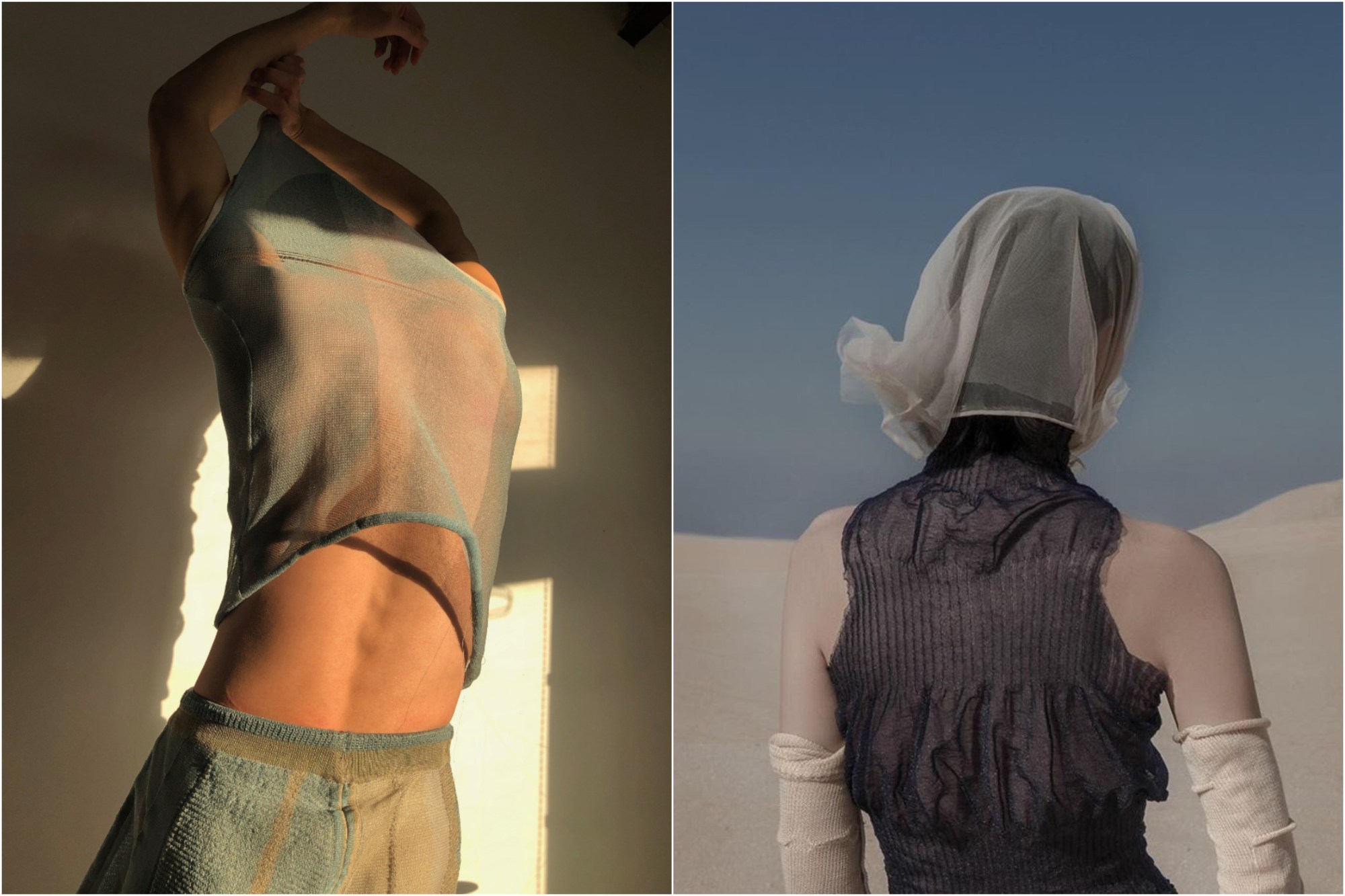
Khanh Brice Nguyen
French-Vietnamese designer Khanh Brice Nguyen cut his teeth at Dior and Sonia Rykiel, and earned an MA in from London’s Royal College of Art before launching his own knitwear studio. His sensual knit garments sit at the nexus of traditional craft and digital technology.
How did you start designing knitwear?
Before moving to London, I was living in Paris, interning at Dior. Although I wasn’t part of the knitwear team, I really admired how knitwear designers create from scratch, starting with the yarn, inventing their own material and designing shapes from there. Afterwards, I got the opportunity to intern at one of Dior’s knitting mills in Northern Italy, Volcar. There, I had a very hands-on experience. I was knitting all day and being taught by passionate elderly Italian ladies who shared their lifetime of knowledge with me. This is where I fell in love with the process and the craftsmanship, and when I decided I wanted to become a knitwear designer.
Conventionally, knitwear is worn to keep warm and cover up, and has thus developed a reputation for being a pretty conservative garment category. How do these notions inform your design process — are you challenging them?
I agree, I think we usually associate knitwear with grandma’s boxy, unsexy jumpers. But in reality, a lot of our undergarments, from T-shirts to underwear, are also knitted. I’ve preferred to focus on this category by reinterpreting it in a more contemporary, experimental way. Instead of covering the body, I prefer to reveal and enhance it. I think nowadays many people want to embrace their body and express themselves through the way they dress, especially within the queer community. My designs are very much a response to them.
How did you develop your signature “drop-stitch” tops?
The theme of my MA collection at the Royal College of Art was sound. And my main inspiration was composer John Cage, who played with noise and random elements to create music. I applied the same process to my collection, playing with accidents and uncontrolled operations. The “drop-stitch” top embodies this idea: when you knit and make an error, your knit begins to unravel and the stitch drops. It’s an accident, but I made a feature out of it.
How does the body inform your work?
The human form is at the center of everything I create. I’m especially inspired by dancers. This first started when I moved to London and attended a Pina Bausch-themed dance class. Since, I’ve been collaborating with dancers, creating outfits for videos and performances. There’s an instant beauty in seeing your work in motion and on stage, and especially when worn by performers who tell stories with their bodies. I think knit is the perfect material for these types of clothes because of its second-skin nature.
How do you approach sustainability through your designs?
I prefer to call my designs “conscious” rather than “sustainable.” Personally, as a knitwear designer, my process is very transparent because I create all my own materials. I know exactly what yarn I source; I can check their compositions and trace where they come from. I’m also fully-fashioning, which is a knitwear technique that eliminates waste. But most important to me is the human craft. Having worked in a factory, I know how much labour goes into making clothes. So I really insist on making local, small and ethically-run productions, either in my own studio in London, or with trusted factories in Portugal or Italy. I truly argue that the coolest design is nothing without the craftspeople and garment workers to make it happen.
You can purchase Khanh Brice Nguyen’s pieces online at APOC Store.
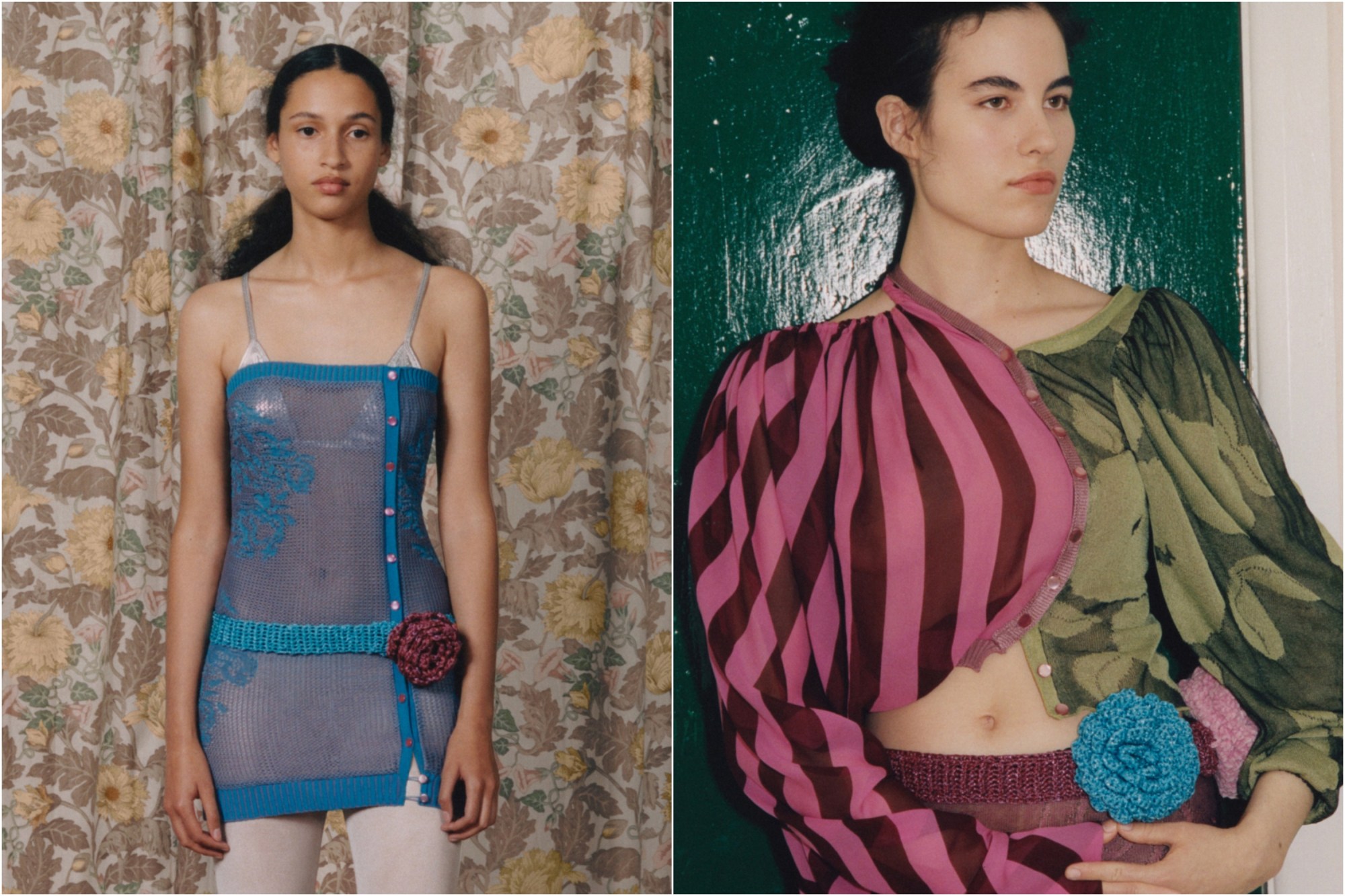

Katya Zelentsova
Central Saint Martins grad Katya Zelentsova designs what she calls “sentimental knitwear.” Her colorful mix-and-match pieces are equally playful and sensual.
How did you start designing knitwear?
I got into knitting by chance — maybe it was kismet? Although my grandma is exceptional at crocheting, I’d never considered it before attending Central Saint Martins. During foundation year, I completely tanked my first lesson on the domestic knitting machine. But after a month or two of after-hours practice, there was no doubt that that was exactly how I wanted to spend my days. The possibilities are endless with knitwear.
You call your designs “knitwear coutorture.” Could you elaborate on this?Well, RuPaul referred to one of the queens’ runway looks as “coutorture” on Season 3 of Drag Race in a “couture gone wrong” sense. So my friends and I always jokingly call our work “coutorture.” But for us, I guess it’s just poking fun at how laborious and painstaking knitting can be: making the fabric, then putting the pieces together. So many trims to link, so many buttons to button…
Conventionally, knitwear is worn to keep warm and cover up, and has thus developed a reputation for being a pretty conservative garment category. How do these notions inform your design process — are you challenging them?
Coming from a place with a pretty severe continental climate, I’ve always been interested in dressing for the extremes and how knitwear can fit into both and everything in between. A lot of my work is just about finding out how you can stay warm while wearing as little as possible and, likewise, how to keep your knitwear staples throughout the summer when it’s over 40°C. All in all, I set out pretty early on to never treat knitwear as a conservative thing or something that’s limited to only jumpers and twinsets. There’s definitely a certain concern in the back of my mind that it won’t be taken as seriously because it’s not a really nice ecru jumper, but you have to live your truth and my truth just happens to be cardigans turned into mini skirts.
How does the body inform your work?
There’s usually quite a lot of it on display. My Central Saint Martins BA collection drew a lot from what I’d wear to parties, so there were a lot of cut-outs, the hems were short, and the underboob was abundant. But I also understand that this isn’t for everyone. For my MA, I focused a bit more on the comfort aspect — that sort of early Sonia Rykiel sensuality. So it manifested more so in transparent versus solid fabrics. Ultimately, I want people to feel good in these clothes, so that while they’re revealing they’re never constricting. They’re very much made with the body in mind; you can have a great time in them and not worry about something not fitting right.
Knitting seems to be a very intimate process. Could you walk me through how you create some of your pieces?
It’s a vastly different experience depending on the technique. It’s pretty intimate if I’m just doing some leisurely crochet in my bed watching Twilight. And when I’m knitting on a Dubied or a domestic machine, I’ve got my headphones in and I’m completely cut off from the world because concentration is key. But there’s also a lot of room for teamwork. Of course, if you decide to make a dress out of 200 crochet flowers, you’re going to need some back-up — be it your grandmother or a small but dedicated group of fellow knit students. At this point, the process becomes positively communal.
You can purchase Katya Zelentsova’s pieces online here.
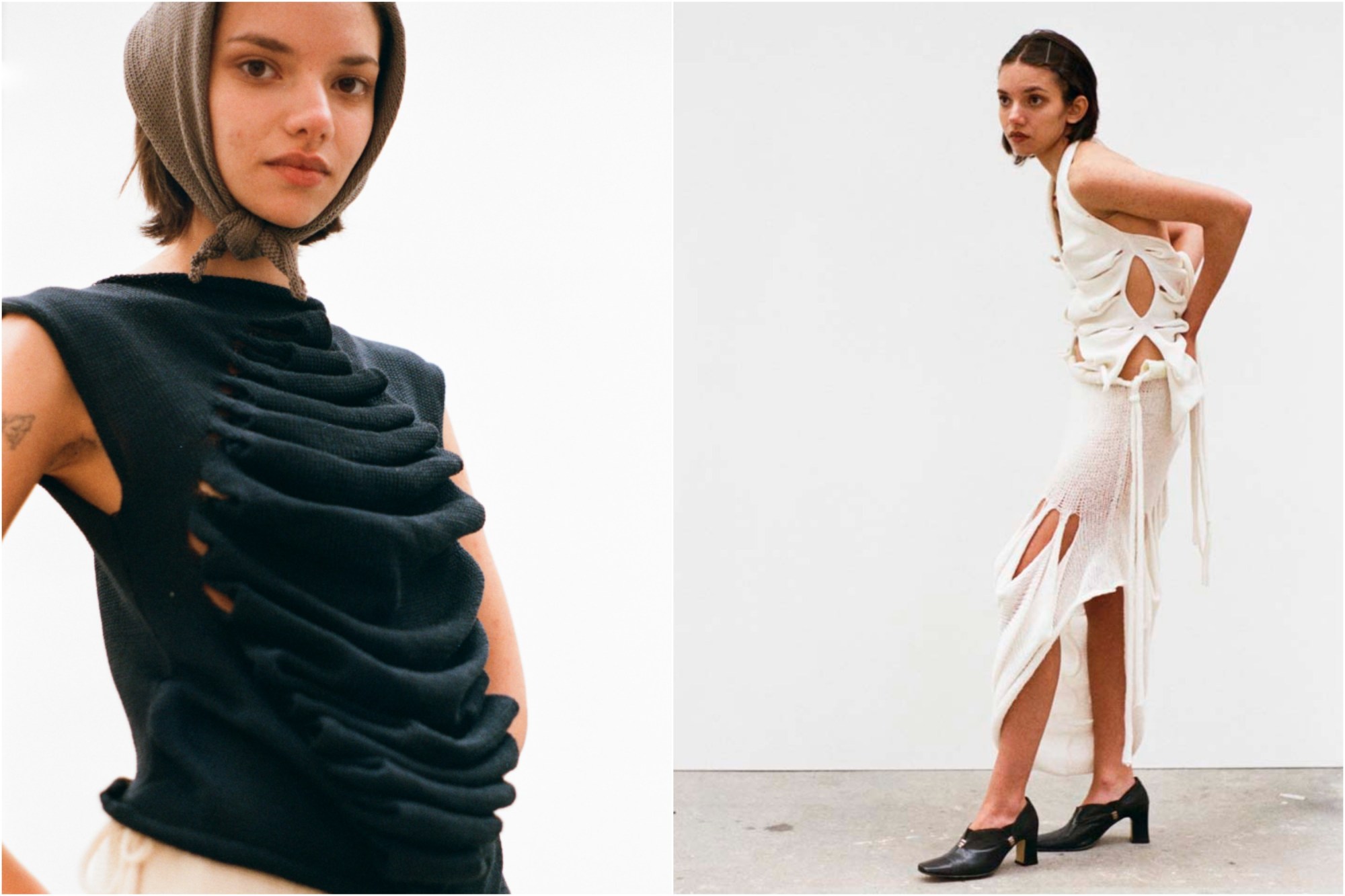
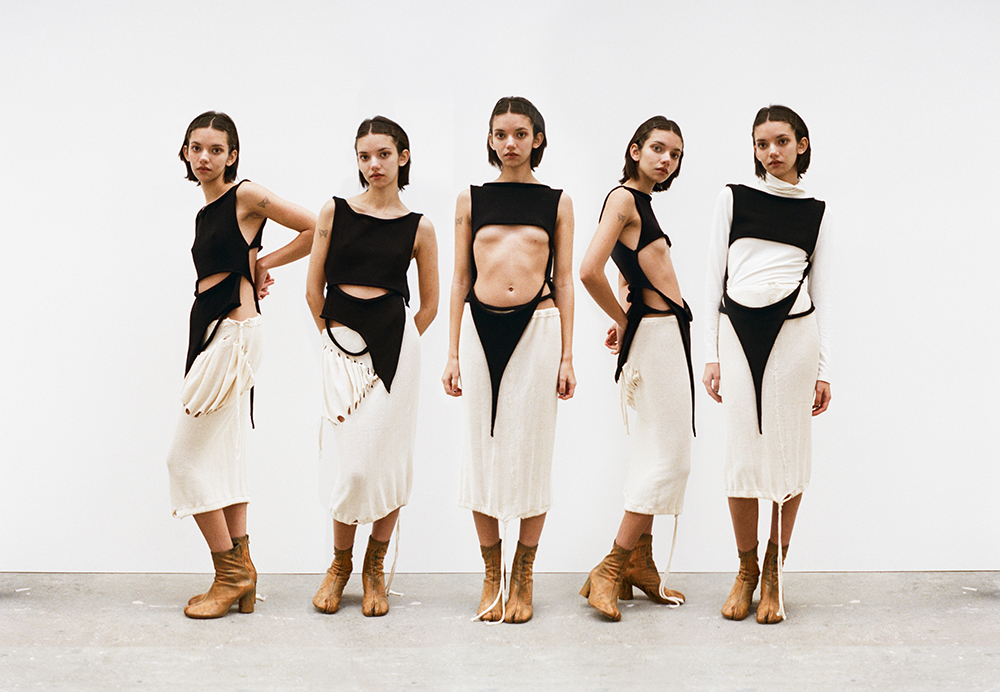
Krystal Paniagua
Royal College of Arts MA grad Krystal Paniagua designs with community front-of-mind. Her transformable knitwear pieces foreground the relationship between designer and wearer, and between wearer and garment.
How did you start designing knitwear?
I started the third year of my BA at FIT. I was fed up with the limitations of cut-and-sew garment-making, so I decided to learn a new craft instead of dropping out of university and doing something else. I moved to Italy and learned the technique from the most basic level and worked my way up. I saw knitwear as an opportunity to create whatever I wanted. It gave me the freedom I was looking for as a designer.
Conventionally, knitwear is worn to keep warm and cover up, and has thus developed a reputation for being a pretty conservative garment category. How do these notions inform your design process — are you challenging them?
My knits don’t follow the conventions of traditional knitwear; they’re not limited to the expectations of what knitwear is supposed to be — i.e. jumpers and scarves. However, I think it’s very important to understand the traditional method in order to make something new out of it. Knitwear is a completely different process to other forms of garment construction and I want to celebrate it rather than see it as old-fashioned. For me, knitwear is about modernising tradition rather than turning away from it.
I come from Puerto Rico, a very tropical place, so making warm knitwear was the last thing on my mind. By learning the techniques and using other materials, I was able to grasp that knitwear can be adapted to various contexts. I’m trying to make knits that are different from what’s out there. But I want to avoid the gimmicks of making sexy knitwear, and instead create wearable knits that are sophisticated transitional pieces.
How does the body inform your work?
One of the qualities of knitwear is that it has a natural stretch to it, and therefore moulds itself to many body shapes and sizes. Knit is flattering to all bodies, which has always been an integral part of my designs.
How do you approach sustainability through your designs?
One of my favorite aspects from knitwear is that there is barely any waste. I can shape the garments to any desired shape without cutting. If I mess up the textile, I unravel the piece and start again with the same material. So there’s a big advantage in the process of reusing and not having any waste.
I believe that sustainability comes from making and owning pieces that one can emotionally connect to. It’s important to cherish the garments and take care of them. Any objects used and loved require care, as decay is part of the nature of the lifespan of everything. By making garments that are adjustable and modifiable I hope I can introduce a possible emotional connection between garment and wearer.
You can purchase Krystal Paniagua’s pieces online at her newly-launched e-shop.
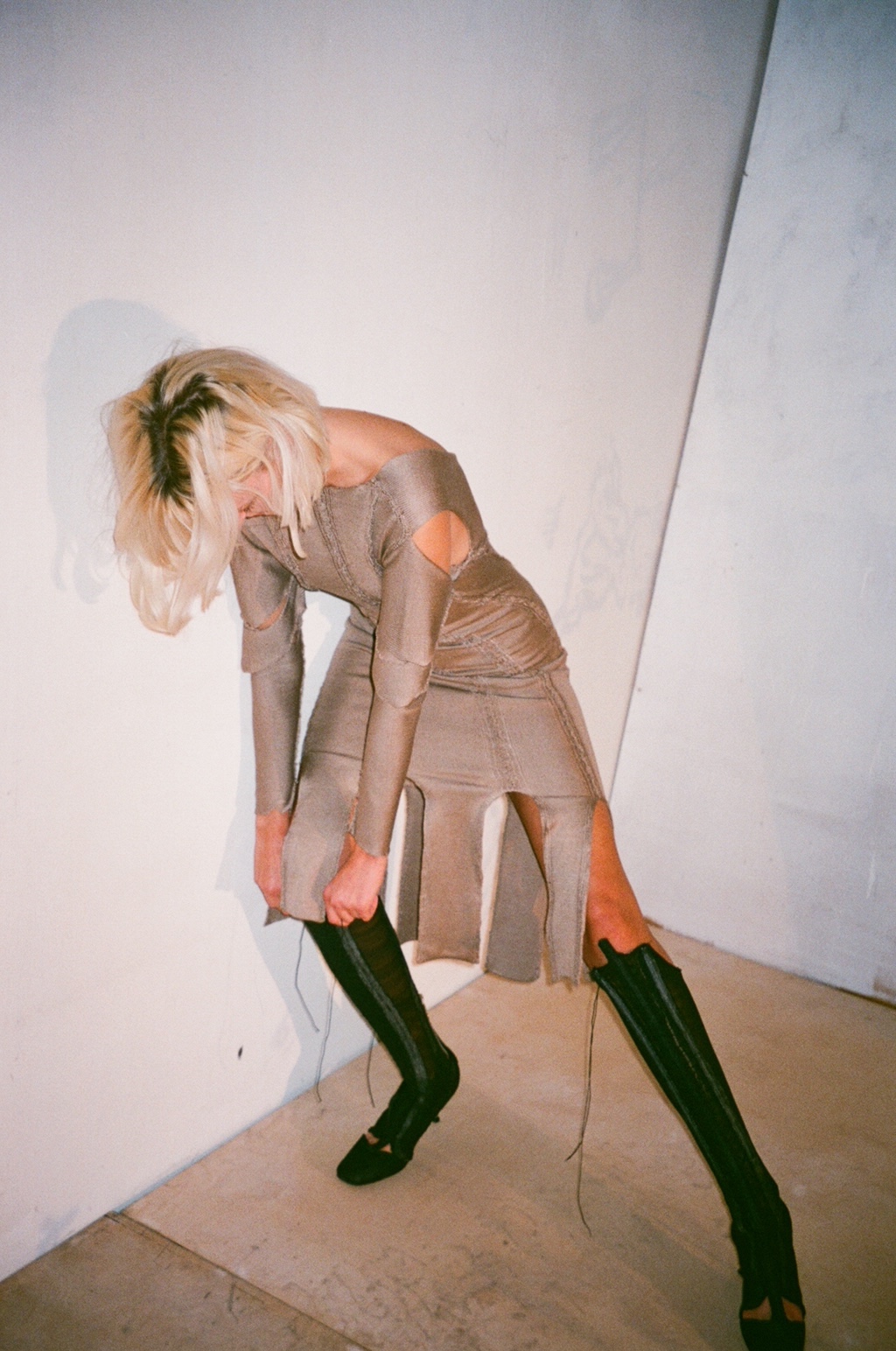
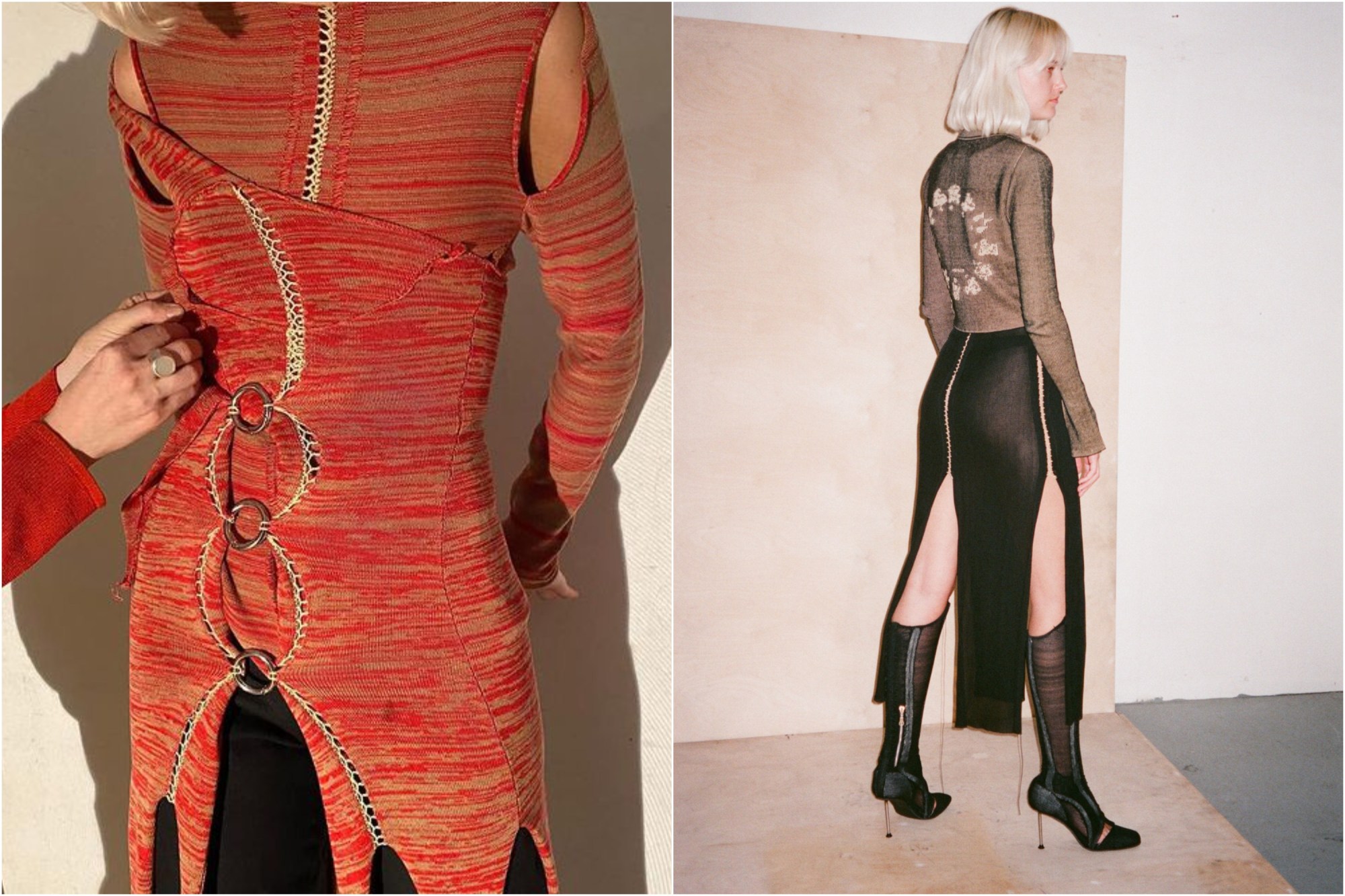
Kepler’s Alexandra Hadjikyriacou & Jaimee Mckenna
After meeting at Central Saint Martins, designers Alexandra Hadjikyriacou and Jaimee Mckenna formed Kepler in 2016. Through the label, the duo focus — with laser-like precision — on traditional garment-making techniques and innovative construction methods.
How did you get into designing knitwear?
We met at CSM where we both studied textiles and knitwear. Coincidentally, we both actually thought we would want to choose the Print pathway, but knitwear so was exciting as it has so many more possibilities: the fact that you can create your own fabric from a single thread and can choose so many different materials.
Do you feel like you’re pushing the boundaries of what knitwear can be, and how so?
In fashion usually people are more focused on the silhouette, and, throughout history, designers have pushed those boundaries of tailoring, draping, pattern cutting etc. Sometimes knitwear can fall to the sideline and be in the more traditional form because of that. For brands that are focused on the tailoring aspect of fashion, knitwear can seem quite daunting and expensive to experiment with as there are a lot of trials and errors and a huge technical understanding. As we have come from a textile knitwear background, specialising in domestic and industrial knitting machines, we have honed our skills and focused our work on refining our craft.
Could you walk me through your design process?
We always start with research, which is always based around this new world which we are creating, Planet Kepler. We look at geology, anthropology, historical garments that will inspire us to start throwing ideas out for our knitted swatches. From then on, we work super organically. We both go create something which then feeds the entire collection.
Could you speak to the inspiration behind your unique panelled and cut-out pieces?
We wanted to create knitwear that looked like armour. For those pieces, we looked at a lot of armour references.
How does the body inform your work?
Part of knitting is like creating a new skin and this is how we approach the human form with our knitwear.
You can purchase Kepler’s pieces online at APOC Store, Auné, 50-M, Maimoun, Gentle Wench, Selfridges and the label’s e-shop.


